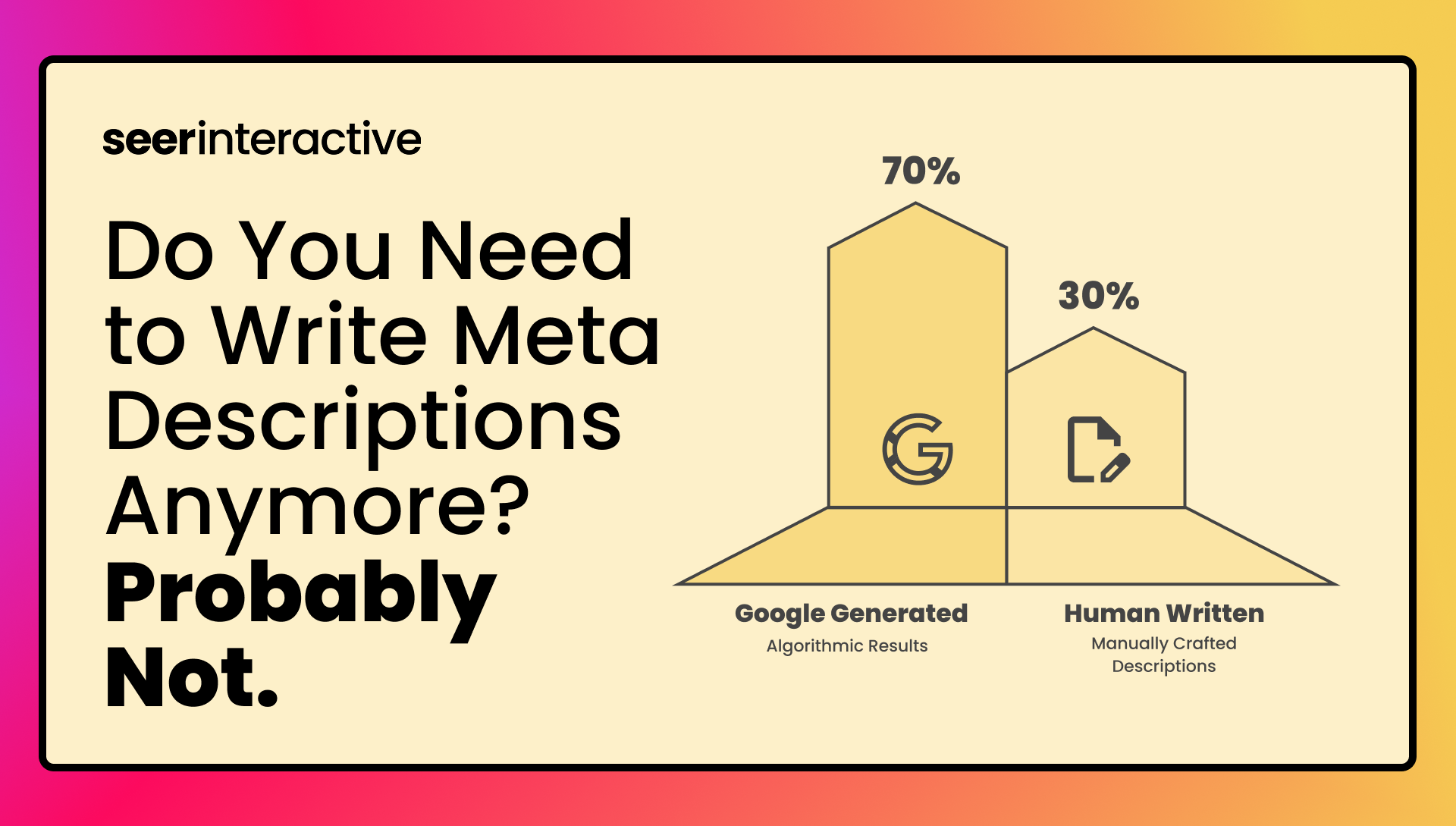I recently found myself in an odd situation. My client had launched an eCommerce site that is less than a year old. As I was digging through Google Analytics I noticed that about 56% of organic visitors were NOT viewing product pages! Obviously, this is an issue since the whole goal of the site is to sell products.
Meanwhile, I was also working with an established client, a leader in their space (also eCommerce, but not a traditional “Amazon-style” eCommerce site). Their target search terms are extremely competitive and FULL of SERP features that are making the first page of results increasingly smaller in terms of traditional organic listings. So, being in position 6 or 7 is typically a first-page result, but for the queries we were targeting, those positions usually fall to the top of page 2.
So I was faced with two completely different problems:
- How can I get more people to view more product pages?
- How can I help my client rank higher for such competitive queries?
Idea/Possible Solution:
- Internal linking
What Are Internal Links?
Internal links are links that go from one page on a domain to another page on the same domain. There are various types of internal links such as navigation links, footer links, call-to-action buttons, etc. There are also in-line links (or links within page copy), much like this link to our SEO page.
In the images below I have added a box around all of the internal links to help you visualize what they can look like.


Can Internal Linking Help With Keyword Rankings?
For increasing the percentage of visitors to product pages, this hypothesis made perfect sense and I don’t think anyone would argue with it. However, dealing with the competitive queries issue was slightly different. I had seen success in keyword movements with internal linking before, but nothing like what I needed to do here. I needed to find opportunities at scale and make sure my client would allow me to test my hypothesis. Also, how was I going to do this in a way that wouldn’t waste all of my time?
I hated science as a kid, but I love research. One of the only things I remember from my science classes is the Scientific Method (probably because it applies to all types of science and research and not only Chemistry and Geology). So I approached this problem using the Scientific Method.
The Internal Linking Test
Observation:
Internal links can have a positive impact on keyword rankings.
I have seen it on a much smaller scale before with other clients. I typically viewed internal linking as a tactic and not a strategy.
Research:
I found some information from doing a few searches, but nothing that made me feel completely confident that this MIGHT work.
Hypothesis:
Hypothesis #1:
By adding internal links from various pages to key pages (product pages in this case) we can improve conversion rates, increase transactions and revenue, and lower the percentage of visitors not visiting a product page.
Hypothesis #2:
If I can find 3 to 5 opportunities to internally link to a page with the exact same anchor text, rankings would improve by 1 to 3 positions (which would be a big win for the queries I was targeting and the difference between page 1 and page 2 of SERPS).
Experiment:
Working very closely with my colleague on our Technical SEO team, Allison Hanh, we built a tool using Power BI that allowed us to find opportunities for internal linking at scale.
Quick version - we built a dashboard by crawling the domains with Screaming Frog, extracting all page copy, applying a custom metric that we used to score pages, joining everything in Power BI and getting to work!
Client 1 (Hypothesis 1 test):
After the dashboard/tool was built, I was able to find over 80 internal linking opportunities targeting to increasing internal links to product pages/product category pages within two hours. This didn’t require anything from our client except for the action of logging into their CMS and applying the link we provided to their existing content (no content changes were made).
Client 2 (Hypothesis 2 test):
After the dashboard/tool was built, I was able to find over 30 internal linking opportunities to increase internal links to 10 different pages with 10 different anchor texts. This didn’t require anything from our client except for the action of logging into their CMS and applying the link we provided to their existing content (no content changes were made).
I sent the recommendations to my clients to implement and no other edits were made to the pages to ensure that the results we measured were because of the added internal links. My clients were easily able to add in the internal links and we started tracking progress.
Results:
Hypothesis 1 Results:
This one is probably not surprising, but my hypothesis was correct. By adding 80+ internal links from various pages (FAQs, blogs, etc) and comparing two weeks pre- implementations vs. two weeks post-implementation we saw:
- +192% increase in CVR
- +76% increase in transactions
- +116% increase in revenue
- +23% increase in page views to Product pages
- Lowered percentage of visitors not viewing product pages by 58%
All stats above are Organic-channel specific
Hypothesis 2 Results:
Somewhat to my surprise, this hypothesis was also correct! By adding internal links with the same anchor text and comparing two weeks pre- implementations vs, two weeks post-implementation we saw:
- Keyword rankings improve by an average of 2.5 positions (anchor text are the keywords that were tracked)
- CVR of pages that were being linked to improved by +7.5%
- Transactions on pages that were being linked to improved by +13%
All stats above are Organic-channel specific
Conclusion:
While internal links are often thought of as a tactic and don’t typically have a very strategic approach, they should be thought of as a strategy for certain types of problems. I think everyone knew that internal links were important, but how important? It’s traditionally pretty time-consuming to find a large number of internal linking opportunities, we were able to find internal linking opportunities at scale so that we can focus more on the strategy behind them and not get lost in the weeds. In doing so, we proved our hypothesis to be correct and we now possibly have a solution to a large set of potential issues.
If you’re internally linking for no reason, stop. If you’re internally linking with purpose, great! Either way, I recommend working with Power BI or Tableau to find more opportunities quicker and really make an impact without stacking a ton of hours. Finally, if you’re looking for time in your day to run tests like this (or anything Digital Marketing related), check out the open positions at Seer!
Stay curious and stop guessing! Sign up for the Seer newsletter for more SEO tips!


